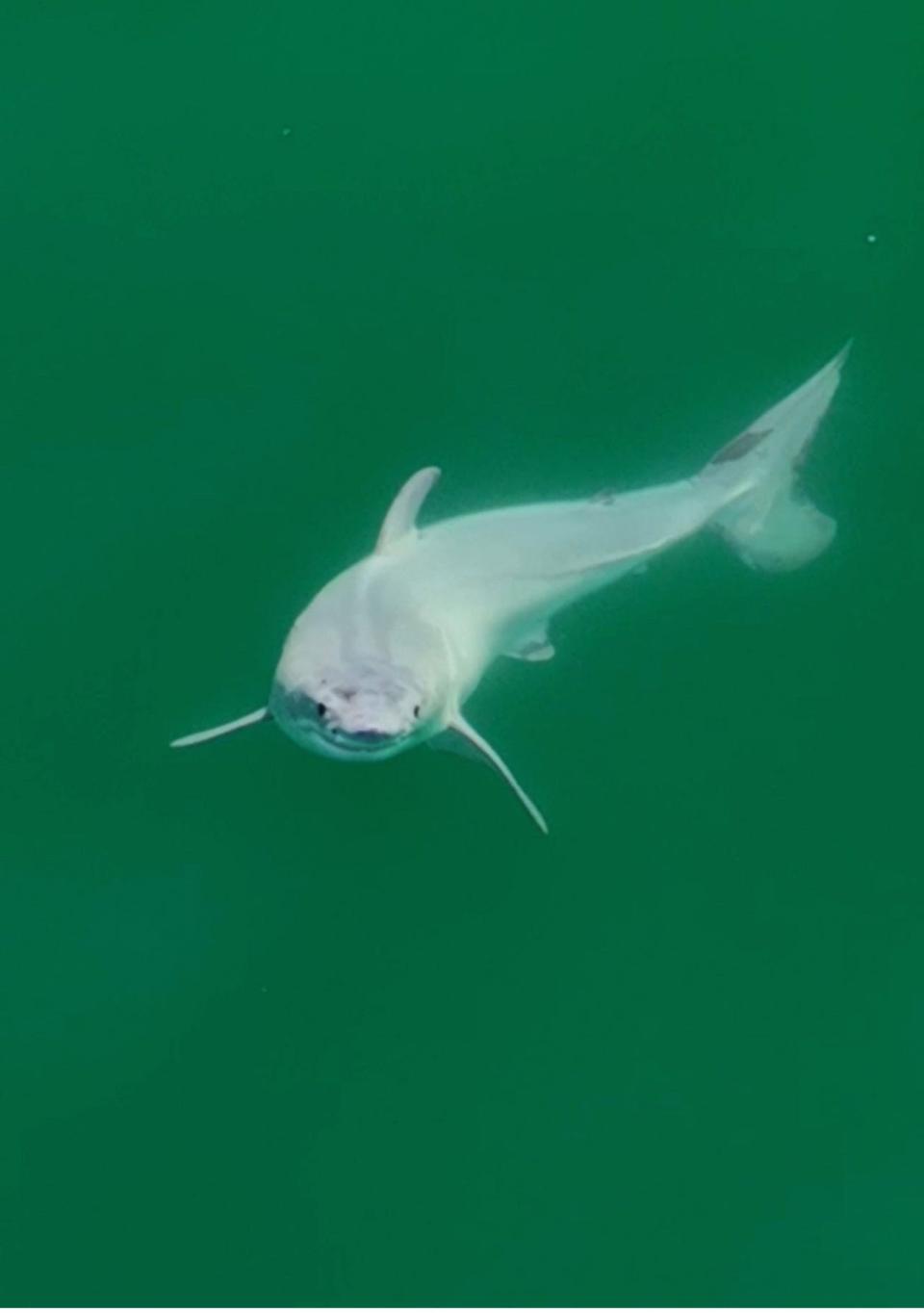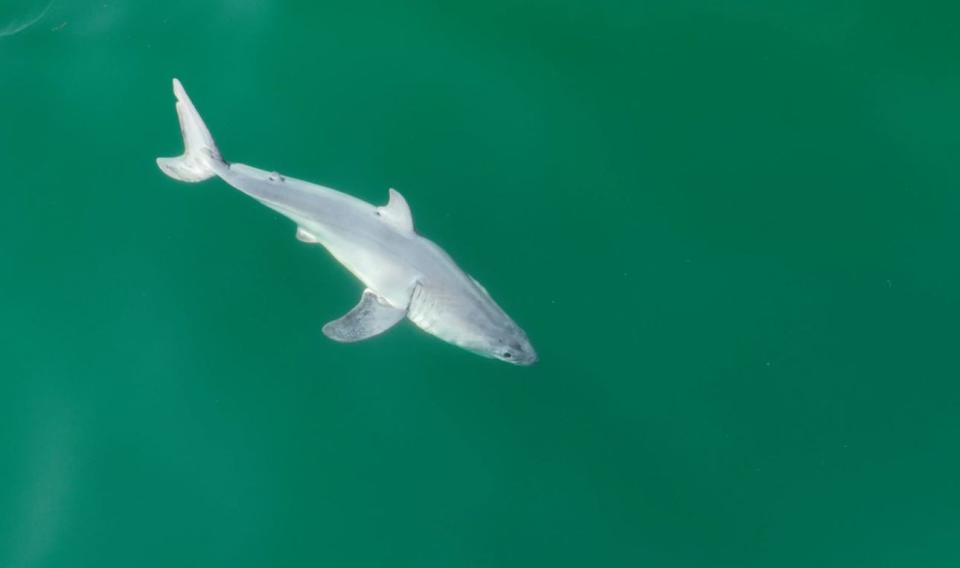A 'holy grail': Why 2 Californians believe they have the first footage of a white shark's birth
A wildlife filmmaker and a biology student believe they may have captured the first-ever footage of a newborn great white shark.
Carlos Gauna, a wildlife filmmaker, and Phillip Sternes, a UC Riverside biology doctoral student, used a drone to film a 5-foot-long white shark swimming 1,300 feet off the coast of Carpinteria, California, when they made the discovery on July 9, 2023, according to a statement from the university.
"We enlarged the images, put them in slow motion, and realized the white layer was being shed from the body as it was swimming," Sternes said in a press release. "I believe it was a newborn white shark shedding its embryonic layer."

The duo observed a shark with a pale color that looked like a thin white film covering its body. According to the press release, the whitish film was being sloughed off as the shark swam. Large, likely mature sharks were recorded in the same area before and after, according to the duo's observations. The shark's pale color could be because of intrauterine substances being sloughed off due to it being a newborn shark or an unknown skin disorder not reported before in white sharks - the presence of which would be a significant finding on its own, Guana said .
Why is finding a newborn great white shark spectacular?
Great white sharks, the largest predatory sharks and responsible for the most fatal attacks on humans, have never been seen as newborn babies in the wild, according to an article by UC Riverside.
"Where white sharks give birth is one of the holy grails of shark science. No one has ever been able to pinpoint where they are born, nor has anyone seen a newborn baby shark alive," Gauna said in a news release. "There have been dead white sharks found inside deceased pregnant mothers. But nothing like this."
According to a report published in the peer-reviewed journal Environmental Biology of Fishes, the discovery of a newborn great white shark in Southern California highlights the crucial significance of this region to Eastern Pacific white sharks. Although white sharks are highly protected off the California coast, fishermen sometimes catch them unintentionally.

"There are a lot of hypothetical areas, but despite intense interest in these sharks, no one's seen a birth or a newborn pup in the wild," Sternes said in a news release. "This may well be the first evidence we have of a pup in the wild, making this a definitive birthing location."
Things to know about great white sharks
The Florida Museum reports that the great white shark is responsible for the highest number of unprovoked attacks among all shark species worldwide.
Due to their aggressive nature and deadly potential, great white sharks have become one of the most feared sea creatures globally. However, recent research indicates that these attacks on humans may not be intentional but rather due to the predator's poor eyesight.
Based on a recent study and a status review by NOAA Fisheries, the population of white sharks in the northeastern Pacific seems to be increasing and is not currently at risk of becoming endangered in US waters.
"Further research is needed to confirm these waters are indeed a great white breeding ground. But if it does, we would want lawmakers to step in and protect these waters to help white sharks keep thriving," Sternes said in a news release.
This article originally appeared on USA TODAY: Great white shark giving birth caught on video, researchers believe

